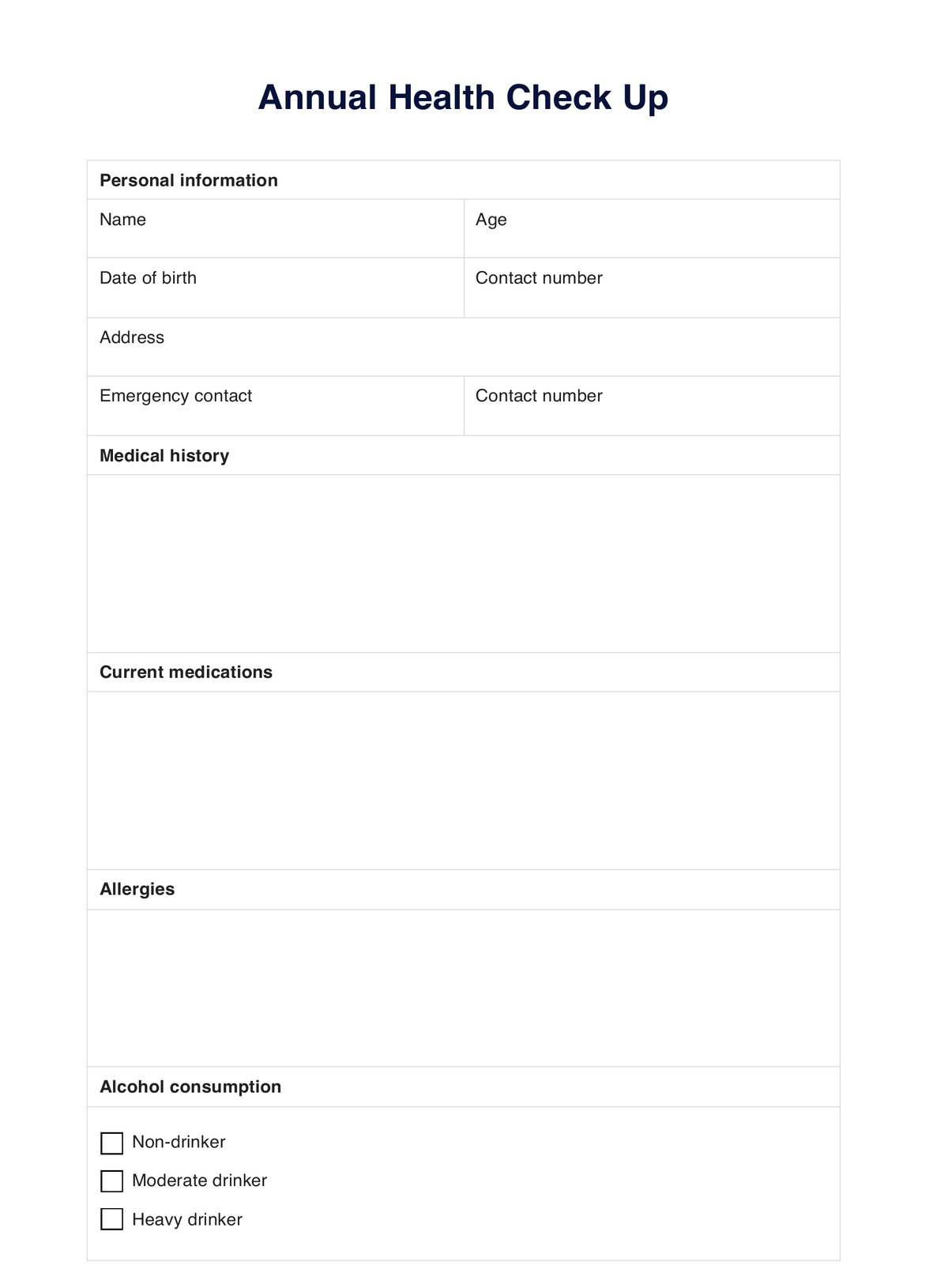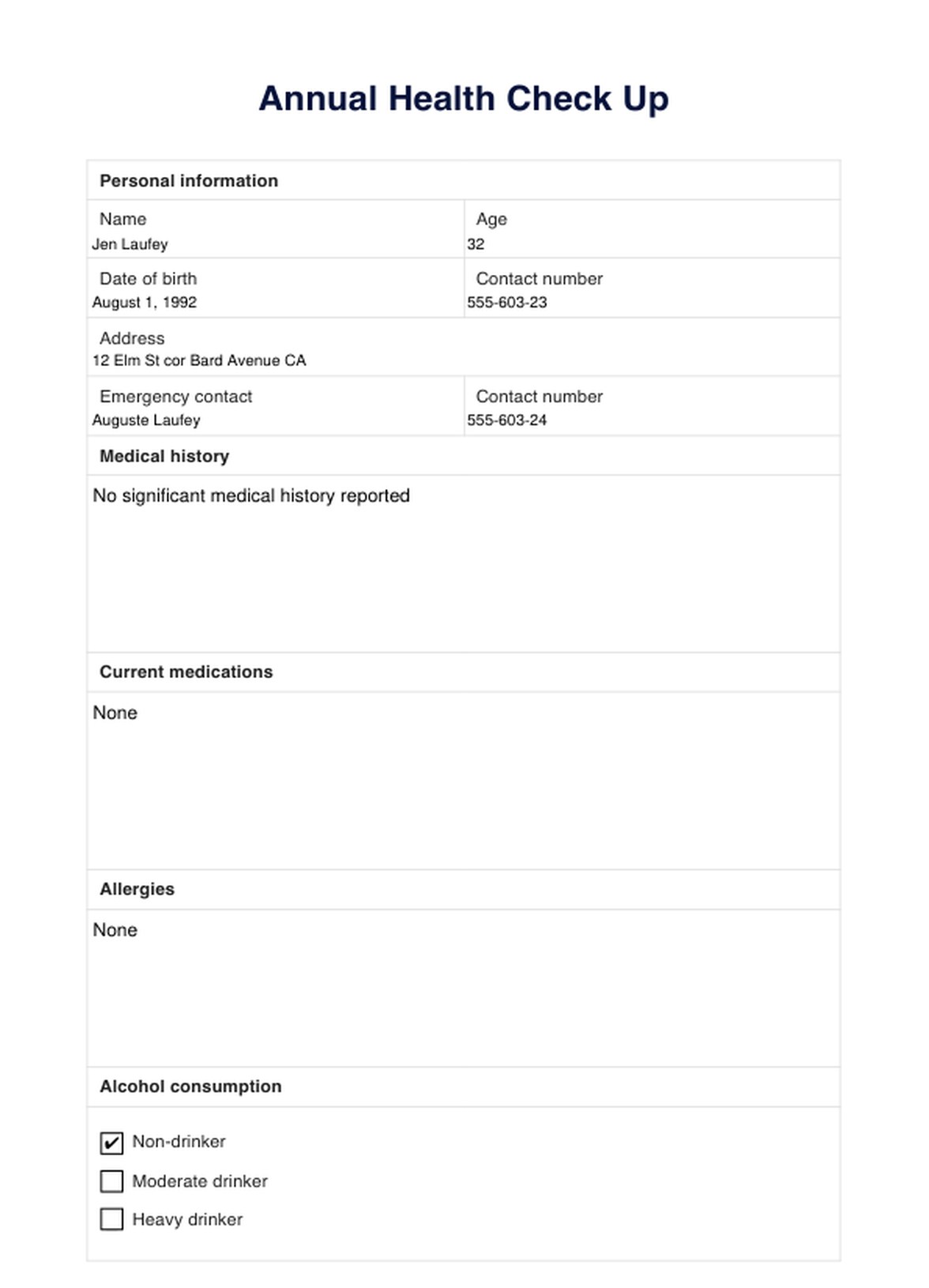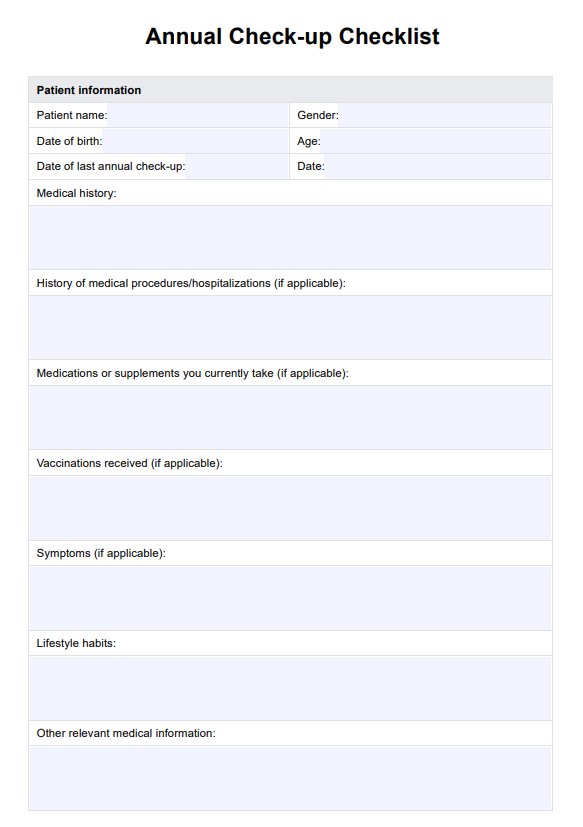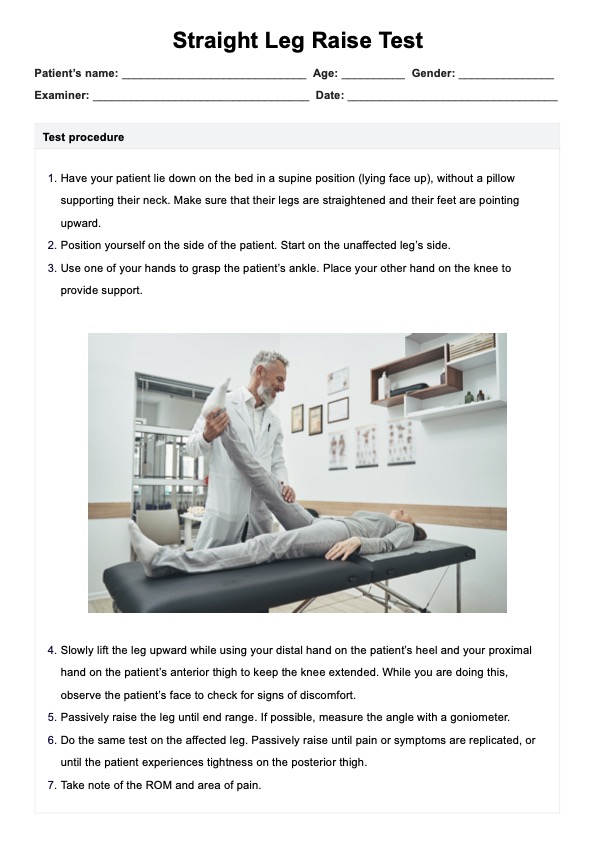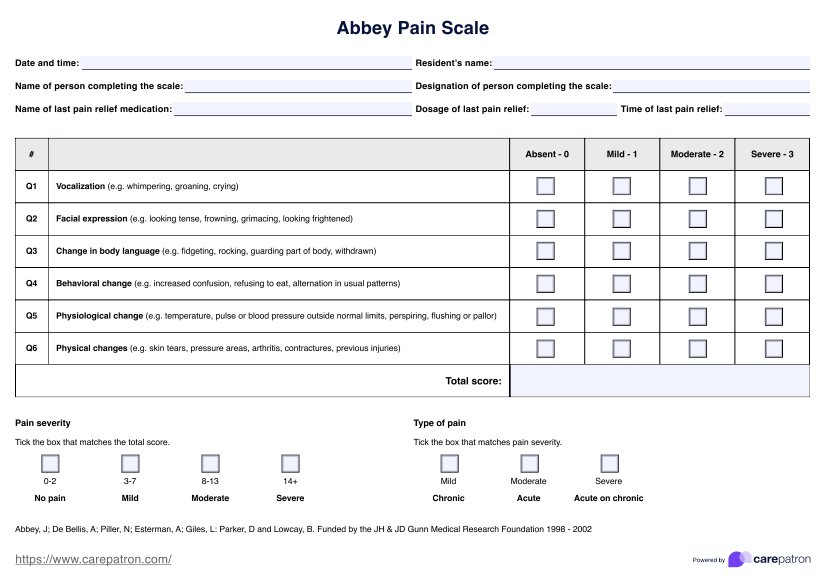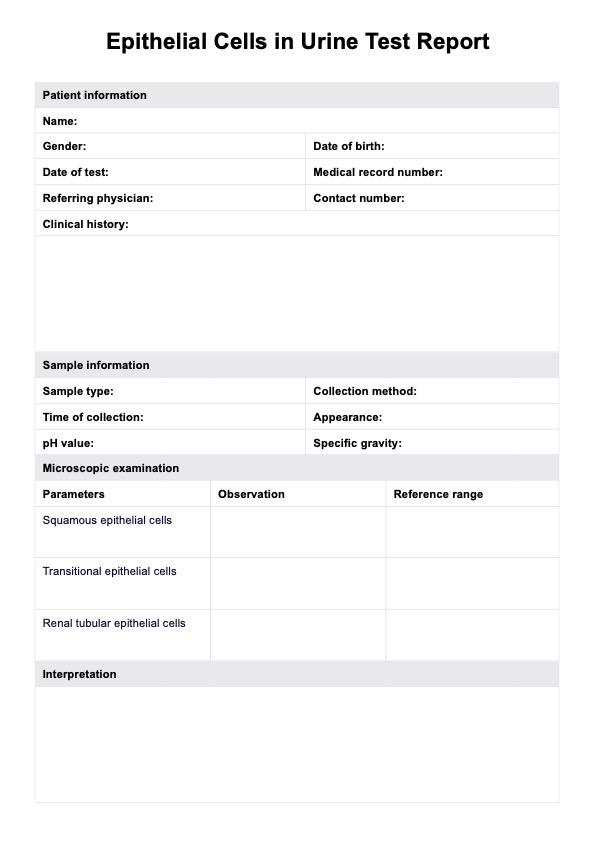Annual Health Check Up
Learn the importance of an Annual Health Check Up for patients. Download a free PDF template and example for your practice.


What is an annual check up?
An annual health check up, also known as an annual physical exam or a yearly check up, is a routine medical appointment that aims to assess and evaluate a patient's overall health status. It covers various aspects of health, including physical, mental, and preventive care.
This type of examination is usually recommended for all individuals over 18 years old. It is an opportunity for patients to discuss any health concerns or risk factors with their primary care provider.
Additionally, healthcare professionals identify potential health issues early on, promoting preventive and proactive healthcare. Moreover, the annual check up helps establish a baseline of health, making it easier to track any changes or developments in the future.
Annual Health Check Up Template
Annual Health Check Up Example
What to expect during an annual check up?
Patients can expect their healthcare provider to perform a thorough physical exam during an annual check up. This includes checking vital signs such as blood pressure, heart rate, and temperature. The doctor may also conduct a head and neck exam, abdominal exam, and pelvic exam for women.
In addition to the physical examination, the healthcare provider may review the patient's medical and family health history. This is important as it helps identify potential risk factors or hereditary diseases requiring further screening or monitoring.
Depending on the patient's age and overall health, the doctor may also order blood tests to check for underlying conditions such as high cholesterol or diabetes. Moreover, they may assess the patient's mental health and inquire about any stressors or mental health concerns.
Why are annual check ups important?
Annual health check-ups are crucial in maintaining good health and preventing diseases. Here are some reasons why:
Early detection of chronic diseases
Many chronic diseases, such as heart disease, diabetes, and cancer, may not show any symptoms in their early stages. Regular check ups help healthcare providers identify potential risk factors and signs of these diseases early on, allowing for prompt treatment and better outcomes.
Monitoring and managing existing health conditions
For individuals with pre-existing health conditions, regular check ups are necessary to monitor the progress of their condition and adjust treatment plans accordingly. It also allows for early detection of any complications.
Promoting preventive care
Annual check ups often include various health screenings, such as blood pressure checks and blood tests, which help identify potential health problems before they become serious. This allows for preventive measures to be taken, such as lifestyle changes or early treatment.
Assessing overall health
These exams allow healthcare providers to evaluate a patient's health and well-being. They can offer guidance on maintaining good health and managing any health concerns the patient may have.
Identifying hereditary diseases
Family history significantly determines an individual's risk for certain diseases. Annual check ups allow patients to discuss any family history of diseases and take necessary precautions.
How to prepare patients for their Annual Health Check Up
Patients need to be prepared for their annual check ups to get the most out of their visit with their healthcare provider. Here are some steps that patients can take before their appointment:
- Create a list of any health concerns or symptoms they may be experiencing.
- Gather information about their medical history, including any chronic conditions, surgeries, or hospitalizations.
- Bring a list of all current medications and supplements.
- Note any changes or new habits, such as diet or exercise routines.
- Prepare any questions they may have for their healthcare provider.
- Remember to bring their health insurance information and any necessary copayments or deductibles.
- If any specific screenings or tests need to be done, such as mammograms or blood work, they should follow any preparation instructions given by the healthcare provider.
Using Carepatron's Annual Health Check Up template
Our free Annual Health Check Up form makes it easy to conduct efficient and thorough patient checkups. The form is fully digital and easy to use. Here's how to get started:
Step 1: Access the template
Get a copy of the Annual Health Check Up from this page's link or the Carepatron app. You may also get it from our resources library, which includes handy templates like the Annual Wellness Exam, Male Annual Physical Exam, and Female Annual Physical Exam, among others.
Step 2: Print or use digital
Choose to provide a printed copy of the form or use it digitally during patient visits. Explain the purpose of the check up to your patients and how it will benefit their overall health.
Step 3: Gather patient information
Use our form to gather important information about the patient's medical history, family health history, current medications and supplements, lifestyle habits, and any health concerns they may have.
Step 4: Perform necessary exams and screenings
Follow our checklist to perform a thorough physical exam, including vital signs, head and neck exams, pelvic exams (for women), and any other necessary screenings based on the patient's age, gender, and risk factors.
Step 5: Discuss results and recommendations
Once the exams are completed, discuss the results with your patient and provide any necessary recommendations for lifestyle changes or further tests.
Benefits of free Annual Health Check Up template
Here are some of the benefits of using Carepatron's free Annual Health Check Up template:
User-friendly
Our template is designed with your convenience in mind. It makes gathering patient information and performing necessary exams and screenings easy. You can also customize it to fit your specific needs.
Comprehensive
Our template covers all the necessary aspects of a standard annual health check up. This ensures no important information is missed and all necessary exams and screenings are performed.
Time-saving
With our template, you can quickly gather patient information and perform exams in one go. This saves time for both you and your patients.
Versatile
You can use our template for various patients, regardless of age, gender, or health conditions. It can also be used by different healthcare professionals, including primary care providers, nurse practitioners, physician assistants, and medical assistants.
Other tests for regular medical check ups
Want to perform more comprehensive screenings and tests on your patients? Here are some other recommended exams that can be included in your regular medical check ups:
- Blood tests: These can help assess various aspects of a patient's health, such as cholesterol levels, blood sugar levels, liver function, and more. They can also aid in early detection of potential health issues.
- Heart disease screening: Heart disease is one of the leading causes of death worldwide, but it can often be prevented with early detection. Performing a heart disease screening during an annual check up can help identify risk factors and prevent future complications.
- Head and neck exam: This exam checks for any abnormalities or changes in the head and neck area, including the thyroid gland, lymph nodes, and oral cavity. It can aid in early detection of conditions such as tumors, thyroid disorders, and more.
- Pelvic exam: Primarily for female patients, a pelvic exam checks for any abnormalities or changes in the reproductive organs. It can also include screenings for sexually transmitted infections and cervical cancer.
Commonly asked questions
Individuals should schedule an annual physical exam with their primary care provider to monitor their overall health and address potential health concerns. This includes checking vital signs like blood pressure and reviewing medical history for potential risk factors.
Yes, you can modify our free template to fit your needs. Depending on the services you offer at your practice, you can add or remove sections. This makes it easier to tailor each annual check-up to your patient's needs.
An annual physical exam usually involves a head and neck exam, a pelvic exam (for women), and a comprehensive health risk assessment. Additionally, blood tests may be ordered to screen for chronic diseases or other health conditions.


